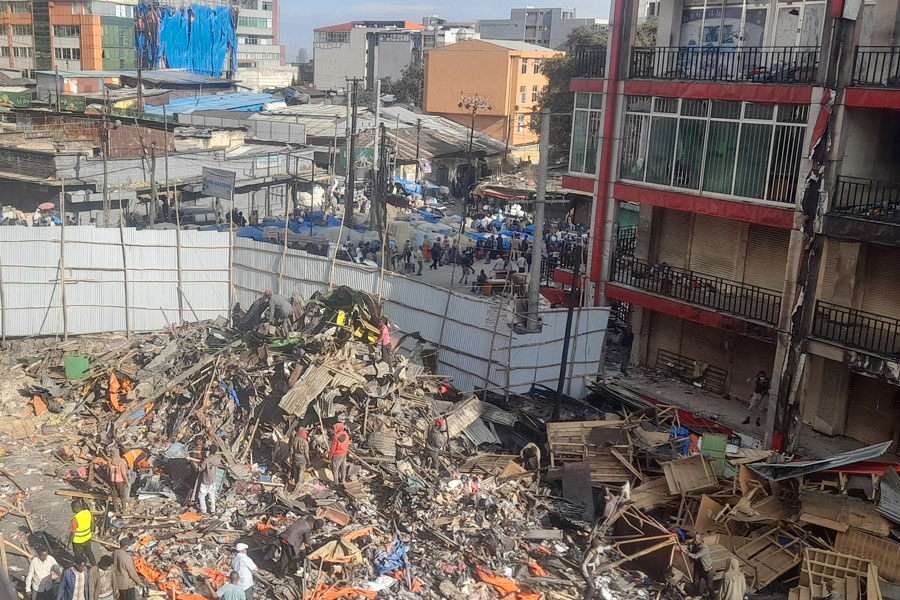
The pervasive construction hazards that in turn affect the human and economic costs have prompted experts at the Ministry of Urban & Infrastructure to prepare a regulatory framework.
As part of overhauling the construction sector, the bill spearheaded by the Ministry delineates the duties and responsibilities of clients, project stakeholders and workers involved in construction projects.
Officials put forth the design, tender preparation and contract implementations with hopes of attaching occupational safety and health measures as mandatory requirements for employers and workers.
According to Medina Ahmed, lead executive of construction & infrastructure at the Ministry, the absence of a regulatory framework that would make every stakeholder accountable had opened doors for the safety measures to be neglected painstakingly.
The bill stipulates factoring safety and health standards into the bid selection processes as the main criteria for the pre-qualification of contractors. It entails infusing the safety performance of the contractor, cost estimation of safety equipment, recorded injury rates, and periodic safety programs into consideration for selection.
Medina said the lowest bid criterion in public procurements has contractors exploit the loopholes by neglecting the inclusion of safety measures.
"The only way of improving is by integrating safety in the contract process," she said.
Assigning safety personnel to a project site is mandatory, to oversee safety measures are thoroughly enforced. The officer is tasked with regulating day-to-day activities and alerting workers to potential hazards while recording injuries taking place pinned with a software system.
When the scales and building constructions have evolved over the years the prevalence of significant fatalities has become common. The absence of clearly stated occupational safety standards, weak implementation, and enforcement, and poor management had been significant.
With the bill, stringent legal measures have been set for accidents at construction sites ranging from ceasing construction and license revocation to lawsuits.
"The safety officer will be responsible for recording every detail," said Medina indicating the lack of data has made follow-ups difficult.
The construction industry, employing the largest labour force, has accounted for about 11pc of all occupational injuries and 20pc of deaths. International Labor Organization (ILO) estimates that at least 60,000 fatalities occur at construction sites around the world every year.
The loss in terms of compensation for lost workdays interrupted production, reconversion, and healthcare expenditure account for four percent of the annual GDP. The fatality rate for every 100,00 people is 21 in Africa.
According to Medina, local contractors still perceive occupational health safety requirements as unnecessary and cost-incurring activities, and workers readiness of construction workers to wear personal protective equipment for their job requirements is meager. "There is limited compliance to occupational standards from both sides of the spectrum", she said.
The emergence of big and complex building projects that started to grace the skylines of Addis Abeba significantly increased along with the recurrence and fatality rates of workplace accidents and injuries.
Over 20,000 permits were issued in the ended fiscal year by the Addis Abeba Construction Permit & Control Authority and about 24 workers lost their lives at construction sites in Addis Abeba while 50 workers faced severe injuries.
Kirkos District accounts for most of the fatalities where no less than hundreds of construction projects take place.
Zerihun Shibabaw, industry, safety and health team leader at the district, indicated that they work on awareness and take legal measures against those who do not comply but "recklessness" on the workers' part and dismal submission of project managers to safety measures exacerbated the problem.
"I hope the regulation will instil some sense of accountability," he said.
On the road from Megenagna Square to the 22 area, construction work is undertaken on a five-storey building by several men with little to no safety equipment.
Kassahun Werkagegnhu, the site engineer, said that even though the importance of construction safety is undeniable, the local clients' inability to include the costs in the bids has made contractors lax.
"We can't buy safety equipment from our own pocket," he said.
The problem of enforceability is alarming through the lens of poorly equipped workers who stand face-to-face with the risk of fatal injuries to their bodies. Scaffold collapse, falls, electric shock and repetitive motion injuries are some of the cited injuries at construction sites.
Zegeye Haileselassie, president of the Ethiopian Construction Industry Workers Association Federation applauded the step stating most construction works are classified as high-risk endeavors. However, he said that implementation and enforcement are necessary to see this have a long-lasting effect.
"Legal framework means nothing if it doesn't get enforced," he said.
Established in 1999 with a 1.5 million Br capital, Kassa & Sons Construction Plc has undertaken over 100 projects with 180 permanent employees under its fleet.
The General Manager Getahun Kassa argues that contractors are subjected to debilitating costs that have been overlooked. He said that local clients' inability to factor in the costs of safety equipment in their bid has made contractors carry the burden of keeping up with safety concerns for workers.
"It's easier said than done," he said indicating the safety measure goes in tandem with the budget.
Experts affirm that a thorough understanding of workplace hazards, the support of conducive legislative frameworks, implementation of periodic training, and promotion are important along with the regulation.
According to Yared Seyoum, a construction lawyer, the adoption of a safety culture is a long and time-consuming process that needs the concerted effort of all stakeholders in earnest.
While Yared believes the regulation will pave the way for enforceability, he stressed that it should be feasible and far from setting high unachievable standards.that harm the construction industry in the long run.
"Adherence to the law comes with clarity," he said.
PUBLISHED ON
Sep 02,2023 [ VOL
24 , NO
1218]

Featured | Oct 27,2024

Fortune News | Jul 23,2022

Viewpoints | Feb 10,2024

Radar | Mar 02,2019

Radar | Jun 19,2021

Fortune News | Aug 28,2021

Radar | Aug 12,2023

Fortune News | Mar 26,2022

Radar | Jan 09,2021

Radar | May 27,2023

Dec 22 , 2024 . By TIZITA SHEWAFERAW
Charged with transforming colossal state-owned enterprises into modern and competitiv...

Aug 18 , 2024 . By AKSAH ITALO
Although predictable Yonas Zerihun's job in the ride-hailing service is not immune to...

Jul 28 , 2024 . By TIZITA SHEWAFERAW
Unhabitual, perhaps too many, Samuel Gebreyohannes, 38, used to occasionally enjoy a couple of beers at breakfast. However, he recently swit...

Jul 13 , 2024 . By AKSAH ITALO
Investors who rely on tractors, trucks, and field vehicles for commuting, transporting commodities, and f...

Jun 28 , 2025
Meseret Damtie, the assertive auditor general, has never been shy about naming names...

Jun 21 , 2025
A well-worn adage says, “Budget is not destiny, but it is direction.” Examining t...

Jun 14 , 2025
Yet again, the Horn of Africa is bracing for trouble. A region already frayed by wars...

Jun 7 , 2025
Few promises shine brighter in Addis Abeba than the pledge of a roof for every family...